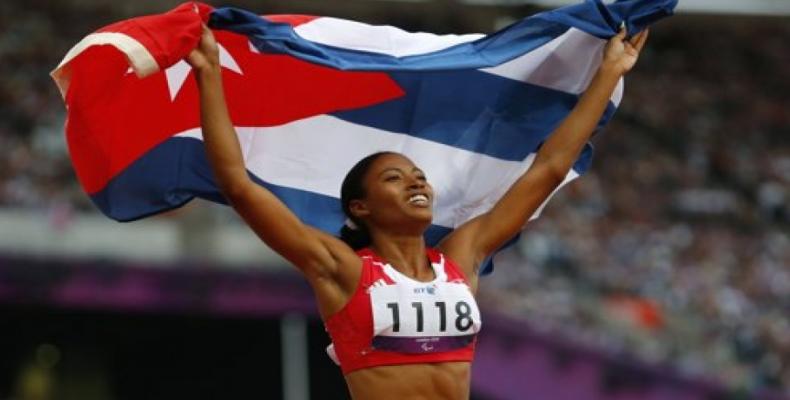Evolutionary profiles for improving the orientation towards athletic specialization
Main Article Content
Abstract
Due to its complexity as a multisport, sports counseling in Cuban school athletics constitutes a problem worthy of investigation. The objective is to support the application of developmental profiles based on deportograms to improve the sports counseling process toward the initial specialization of 12- to 14-year-old children participating in athletics. This is an exploratory and descriptive study. The study of relevant sources of argumentation made it possible to clarify that modeling based on the strongest athletes is the fundamental method for managing the sports counseling process in multisport athletics. The use of deportograms constitutes a valid methodological tool for this purpose. It is suggested that their developmental study be considered, based on the assessment of the tendency toward one of the possible morpho-patterns that are structured by the characterization of possible combinations between athletic disciplines.
Downloads
Article Details

This work is licensed under a Creative Commons Attribution-NonCommercial 4.0 International License.
Those authors who have publications with this journal, accept the following terms of the license Attribution-NonCommercial 4.0 International (CC BY-NC 4.0):
You are free to:
Share — copy and redistribute the material in any medium or format
Adapt — remix, transform, and build upon the material
The licensor cannot revoke these freedoms as long as you follow the license terms.
Under the following terms:
Attribution — You must give appropriate credit, provide a link to the license, and indicate if changes were made. You may do so in any reasonable manner, but not in any way that suggests the licensor endorses you or your use.
NonCommercial — You may not use the material for commercial purposes.
No additional restrictions — You may not apply legal terms or technological measures that legally restrict others from doing anything the license permits.
Notices:
You do not have to comply with the license for elements of the material in the public domain or where your use is permitted by an applicable exception or limitation.
No warranties are given. The license may not give you all of the permissions necessary for your intended use. For example, other rights such as publicity, privacy, or moral rights may limit how you use the material.
References
AmIgó, A. I., Sala, V. P., Faciabén, A. B., Evrard, M. M., Marginet, M. C., & Zamora, L. R. (2009). Talla, peso, somatotipo y composición corporal en gimnastas de élite españolas (gimnasia rítmica) desde la infancia hasta la edad adulta. Apunts. Educación física y deportes, 1(95), 64-74.
Cassirame, J., Sanchez, H., Garnier, A., & Frere, J. (2019). How pole vaulters from different levels deal with speed to perform, 44th Congress of the Société de Biomécanique, Computer Methods in Biomechanics and Biomedical Engineering, https://doi.org/10.1080/10255842.2019.1668135
García Manso, J. M.; Campos Granell, J.; Lizaur Girón, P. & Pablo Abella, C. (2003). Formación de élites deportivas. Madrid, Editorial GYMNOS, p. 54-55.
Greco, P., Conti, G., & Pérez, J. (2013). Manual de Práticas para a Iniciaçao Esportiva no Programa Segundo Tempo. Maringá: Editora da Universidad Estadual de Maringá. https://journals.plos.org/plosone/article?id=10.1371/journal.pone.0225975
Gross, M., Greeley, N.B., & Hübner,K. (2019).Prioritizing physical determinants of international elite pole vaulting performance, Journal of Strength and Conditioning Research, Section for Elite Sport, Swiss Federal Institute of Sport, Magglingen, Switzerland,00(00)/1-10.
https://journals.plos.org/plosone/article?id=10.1371/journal.pone.0225975
Haycraft, J. A. Z., Kovalchik, S., Pyne, D. B. & Robertson, S. (2019). Relationships between physical testing and match activity profiles across the Australian football league participation pathway. Int J Sports Physiol Perform, 14, 771 - 8.
Higgs, C.; Jurbala, P.; Way, R. & Balyi, I. (2019). Long term development in Sport and Physical activity 3.0. Canada: Sport for Life, ISBN: 978-1-927921-79-1.
La Torre-Cruz, D., Manuel, J., Ruiz-Ariza, A., Ocaña-Expósito, S., & Martínez-López, E. J. (2017). Perfiles de orientación hacia la meta y su relación con indicadores de actividad físico-deportiva. Universitas psychologica, 16(3), 100-111.
Martín, I., Vallbona,A., Valeri , X., Losada , Í., Fernández, M., Benarroch ,D., Martín,P., y Fernández , S. (2018). Estudio comparativo internacional de los modelos de deporte de alto nivel “La nueva era del deporte español requiere una visión estratégica a largo plazo”. Madrid, España. https//www.deloitte.es
Montealegre. D, P., y Vidarte, J.A. (2019). Perfil antropométrico, somatotipo y condición física de niños patinadores de Neiva. Revista digital - Acción Motris, nº 22 enero / junio / Asociación Científico Cultural en Actividad Física y Deporte (ACCAFIDE). Las Palmas de Gran Canaria, ISSN - 1989-2837.
https://www.accionmotriz.com/index.php/accionmotriz/article/view/129
Muñiz, A. (2022). Propuesta AMUSA de sistema de competición oficial para el atletismo infantil y escolar cubano: una urgencia para la formación de los talentos. EmásF, Revista Digital de Educación Física. Año 13, Num. 74 (enero-febrero de 2022) http://emasf.webcindario.com
Palacios Pulgarón, R.; Mesa Anoceto, M.; Ramos Quian, Y. (2023). Perfil de rendimiento de las pertiguistas del equipo nacional cubano. Rev Podium [online]. 2023,vol.18,n.2http://scielo.sld.cu/scielo.php?pid=S1996-24522023000200019&script=sci_abstract
Platonov, V. N. (2001).Teoría general del entrenamiento deportivo olímpico. Barcelona, Editorial Paidotribo, p. 470. ISBN: 84-8019-571-1
Platonov, V. N. (2011). El deporte de alto rendimiento en diferentes países y la preparación hacia los Juegos Olímpicos. Caracas, Editorial Episteme, p.34.
Scott, M. (2014). Under New Governance? Examining the Role of Canadian Sport for Life in Sport Policy and Govce. [Tesis]. University of Alberta, Faculty of Physical Education and Recreation.https://era.library.ualberta.ca/items/25bb9f61-ded1-428c-befa-f06f859c87e5
Valero, A. (2004). El enfoque Ludotécnico como alternativa a la enseñanza tradicional del atletismo en la Educación Primaria. Aula de Encuentro, 8, 119-131. https://dialnet.unirioja.es/servlet/articulo?codigo=1303228
Vico Plaza, J. (2023). Todo sobre el desarrollo atlético a largo plazo (LTAD). https: vitruve.fit/es/blog
Volkov, V. M. & Filin, V. P. (1989). Selección deportiva, Editorial Vneshtorgizdat.Moscú.

